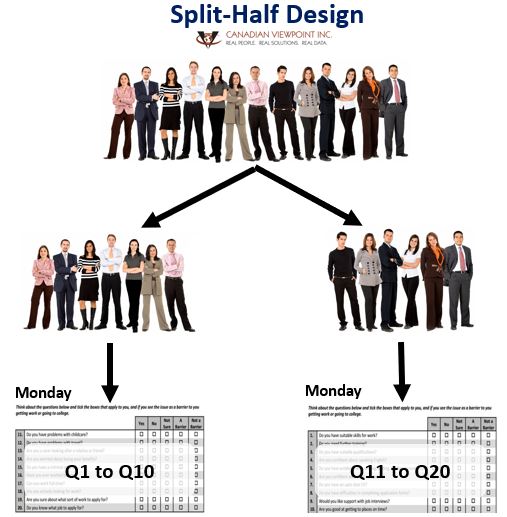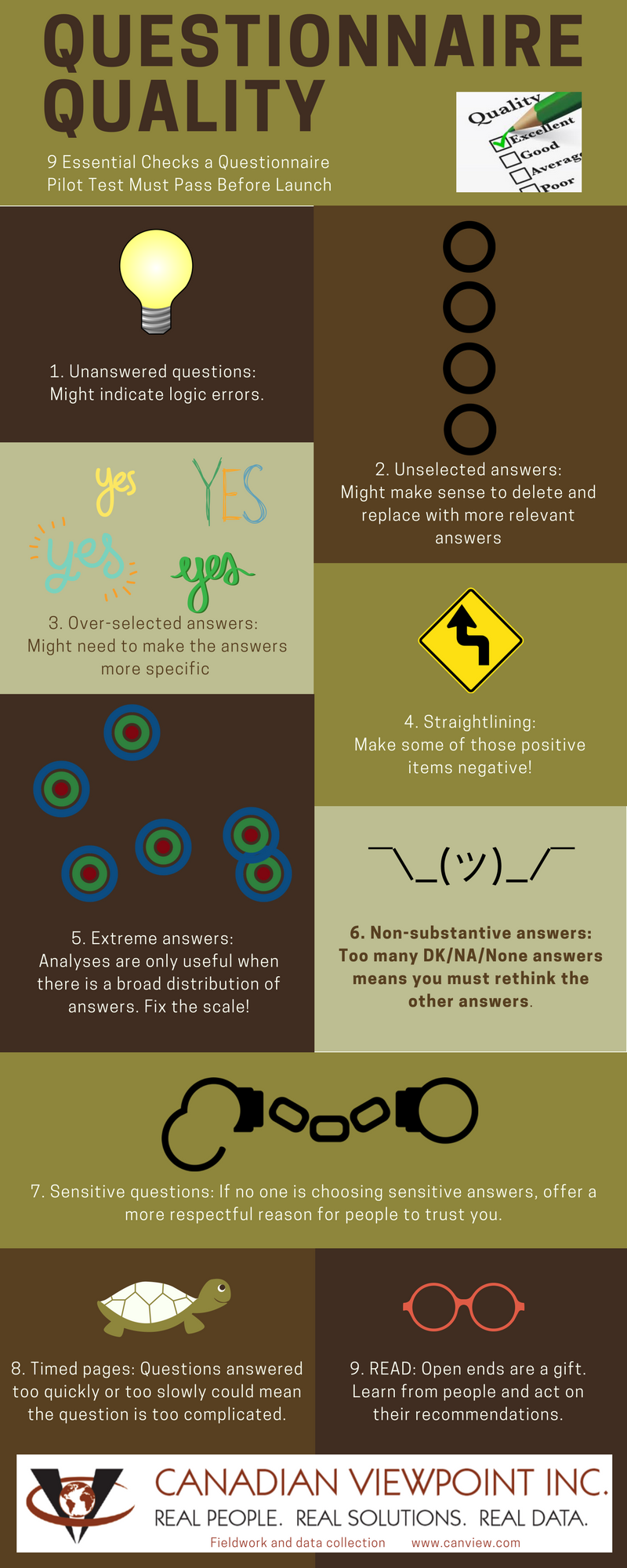You have many options when a questionnaire is simply too long to start programming and fieldwork because it will generate poor response rates and poor data quality. You can cut answer options. You can cut questions. You can vastly increase the incentive. There is, however, another option.
Chunking.
Chunking is a way of shortening extremely long questionnaires not by deleting questions or answers, but rather by splitting it into parts. It can be done in two ways.
- Recontacts: Each person is contacted twice to complete half of the questionnaire.
In this scenario, every person receives an invitation to complete half of the questionnaire. Then, perhaps a week or two later, they receive a second invitation to complete the second half of the questionnaire. So, for example, 600 people complete ten questions on Monday, and then the 500 of those people complete the remaining ten questions on Friday.
The advantage of this method is that everyone answers all the questions. This is desirable when detailed statistical analyses using a combination of questions from both sections of the questionnaire are part of the research plan. On the other hand, the disadvantage is that not everyone will complete both halves of the questionnaire.  Some people will be away, some people won’t notice the link, and other people simply won’t be interested in participating in another survey. Thus, you will need to oversample to retain the necessary sample size from questionnaire one to questionnaire two.
Some people will be away, some people won’t notice the link, and other people simply won’t be interested in participating in another survey. Thus, you will need to oversample to retain the necessary sample size from questionnaire one to questionnaire two.
- Split-Half: Twice as many people are contacted to complete half of the questionnaire.
In this second scenario, each person receives and completes only half of the questionnaire. For example, out of 1000 people, 500 complete the first set of ten questions and the other 500 people complete the second set of ten questions.

The advantage of this technique is that it can be completed more quickly since everyone receives their set of questions on the same day. However, the disadvantage is that different people complete each half of the questionnaire and conducting more complicated statistical analyses may not be possible.
Chunking works best when there are distinct parts to a questionnaire. To take an extreme example, a questionnaire may include a usage and attitudes section, a concept test section, and a packaging test section. It might make sense to separate that questionnaire into two or even three sections depending on how long the questionnaire is to begin with. A 60 minute questionnaire can easily be converted to several 30 or 20 minute questionnaires thereby greatly increasing response rates and vastly improving data quality.
Chunking also works best when the parts of the questionnaire don’t need to interact, e.g., if responses will be evaluated on their own for the total sample, question by question, without specific reference to other parts of the questionnaire. For instance, there might not be a need to correlate a person’s use of home cleaning products with their use of hair care products. As such, those two sets of questions could easily be relegated to the two shorter versions of the questionnaire.
It’s often a good idea to include several questions in all parts of the questionnaire. Doing so serves two purposes. First, for both the split-half and sequential techniques, it allows you to do subgroup analyses in both parts of the questionnaire using data completed at the same time, not a week or two apart. Given the impact that social and environmental events can have on data, timing is sometimes an important influencer of results.
Second, it allows you to do some data quality checking, particularly in the case of the sequential design. Data that doesn’t match for the same person could indicate that a different person responded, or that the person was having difficulty paying attention.
We’d love to help you discover your options when it comes to improving questionnaires that are too long. Please get in touch with us!




